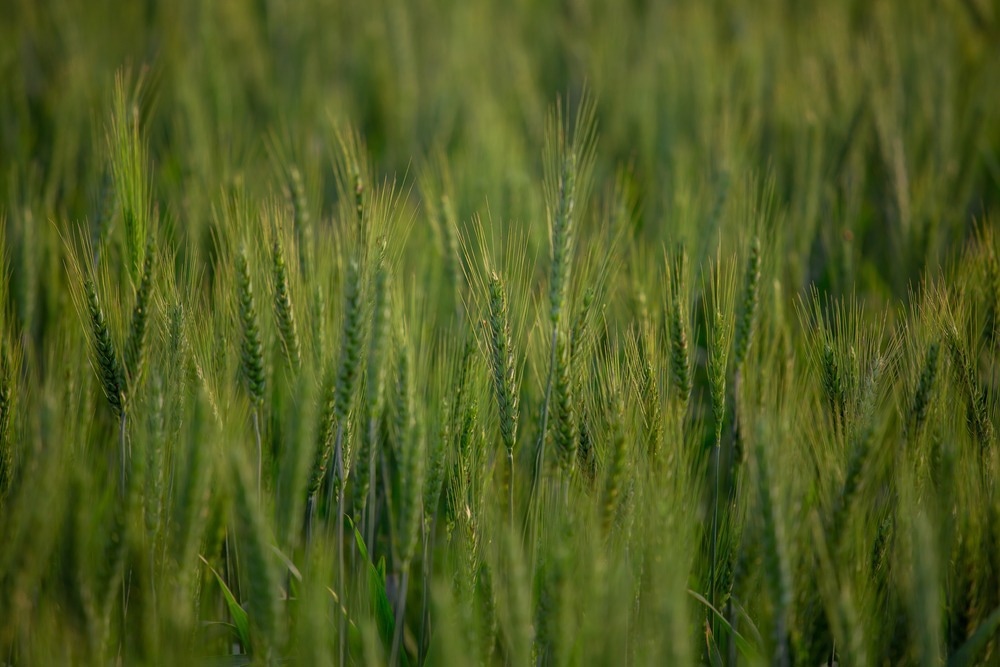Nanoplastics derived from plastic waste are increasingly accumulating in agricultural farmlands. The absorption and deposition of plastic particles by crops pollute the food supply and pose unanticipated health concerns to human beings. However, the effects of nanoplastics on crop grains cultivated in polluted soil remain relatively unknown.

Study: Evidence and Impacts of Nanoplastic Accumulation on Crop Grains. Image Credit: Photohipster/Shutterstock.com
A recent study published in the journal Advanced Science tackles this problem by investigating the transportation of polystyrene nanoplastics (PS-NPs) in various crops, such as peanuts and rice. This important research also examines the influence of nanoplastics on the productivity and nutritional value of crop grains.
Polystyrene Nanoplastics: Overview and Environmental Concerns
Plastic manufacturing has steadily expanded over the previous 30 years, with annual output exceeding 360 million tons in 2018. Polystyrene (PS), which has a high volatile constituent ratio, has emerged as a prominent and toxic plastic substance.
Large plastic wastes may be split into microplastics (100 nanometers - 5 millimeteres) and subsequently decomposed into nanoplastics (<100 nanometers) due to global warming, ultraviolet radiation, and slow microbial degradation. This growing amount of nanoplastic waste is continuously polluting the oceans, rivers, and farmlands.
Nanoplastics have been identified as substantial marine pollutants, with hundreds of thousands of metric tons estimated to be drifting on the surfaces of the main marine ecosystems. However, recent research has also shown nanoplastic pollution in freshwater bodies and various terrestrial habitats.
Additionally, nanoplastics can form homo- and hetero-aggregates due to the diversity of inorganic plastic particles. These nanoplastic aggregates enter the cells of marine and terrestrial organisms and induce cytotoxicity, oxidative stress, irritation, and neoplasia disturbances in metabolism and energy balance.
Impacts of Nanoplastics on Crops and Terrestrial Plants
Crops, which are essential components of the food supply chain, can absorb and retain harmful nanoparticles from the environment. However, terrestrial habitats have recently received significantly less research interest than their aquatic equivalents concerning nanoplastic toxicity.
Some investigations have shown that nanoplastics can penetrate plant roots and reach the leaves. Polystyrene nanoplastics (PS-NPs) can infiltrate plant cells via cracks in wheat and lettuce crops. Additionally, charged nanoplastics have the potential to aggregate and significantly hinder the development and reproduction of a variety of terrestrial plants.
Consuming nanoplastic-contaminated crop grains can also endanger human health. Although recent studies have assessed the entry, dispersion, and cytotoxicity of nanoplastics in crops, little is understood about nanoplastic deposition and activities inside seeds, which are the fundamental living constituent of the biosphere at the lowest nutritional stage of the food chain.
Highlights and Key Developments of the Current Study
The current research sought to ascertain if nanoplastics in soil could migrate into crop grains. Rice and peanut were chosen as crop models since their seeds develop on the ground and underground, respectively.
As a vital socioeconomic crop, rice is the primary diet of more than half of the planet's population. Also, peanuts are a good source of proteins and fatty acids (FAs), ranking second only to soybeans in both volume and nutrition.
The treatment of these crops with polystyrene nanoplastics (PS-NPs) raised the empty-shell numbers of rice grain by 35.45%, resulting in a 3.02% decrease in the seed-setting rate of rice and a 3.45% decrease in the average seed weight of peanuts. Moreover, PS-NPs harmed the nutritional quality of rice and peanut crops by lowering the number of essential minerals, amino acids, and unsaturated fatty acids.
The researchers in this work proved for the first time that nanoplastics could accumulate in rice and peanut seeds. Similarly, nanoplastics had a significant detrimental impact on crop grain quality. These findings suggest that the usage of plastic items in agriculture has a negative impact on food security across the food chain.
Future Outlook
Given their widespread dispersion, future research should look at the possible ecological consequences of nanoplastics, which can damage agricultural production and nutrient delivery.
Relevant studies have revealed that PS-NPs have a high surface-to-volume and hydrophilic nature and might act as transporters for various environmental pollutants such as insecticides, herbicides, and toxic substances, allowing pollutants to accumulate in crop grains.
As a result, introducing nanoplastics into crop grains may be accompanied by additional dangers that threaten public health more than the nanoplastics themselves.
The experiments in this work used PS-NPs to investigate the absorption of nanoplastics and their impact on crop grains. However, there are various sorts of nanoplastics in the atmosphere, and nanoplastics made of other substances may have different effects on crop grains. As a result, future studies should examine the use of nanoplastics comprised of various materials.
Reference
Jiang, M. et al. (2022). Evidence and Impacts of Nanoplastic Accumulation on Crop Grains. Advanced Science. Available at: https://doi.org/10.1002/advs.202202336
Disclaimer: The views expressed here are those of the author expressed in their private capacity and do not necessarily represent the views of AZoM.com Limited T/A AZoNetwork the owner and operator of this website. This disclaimer forms part of the Terms and conditions of use of this website.